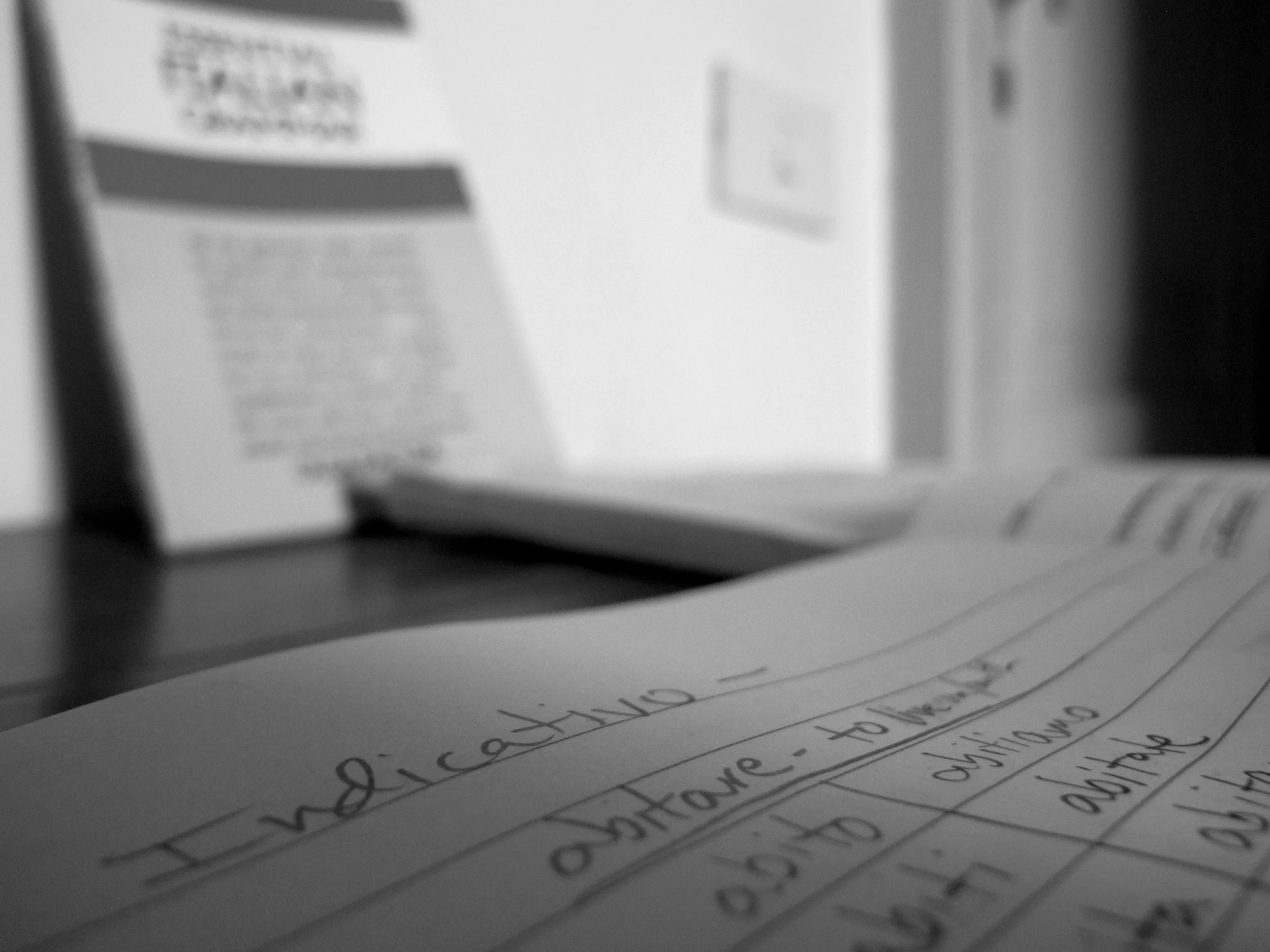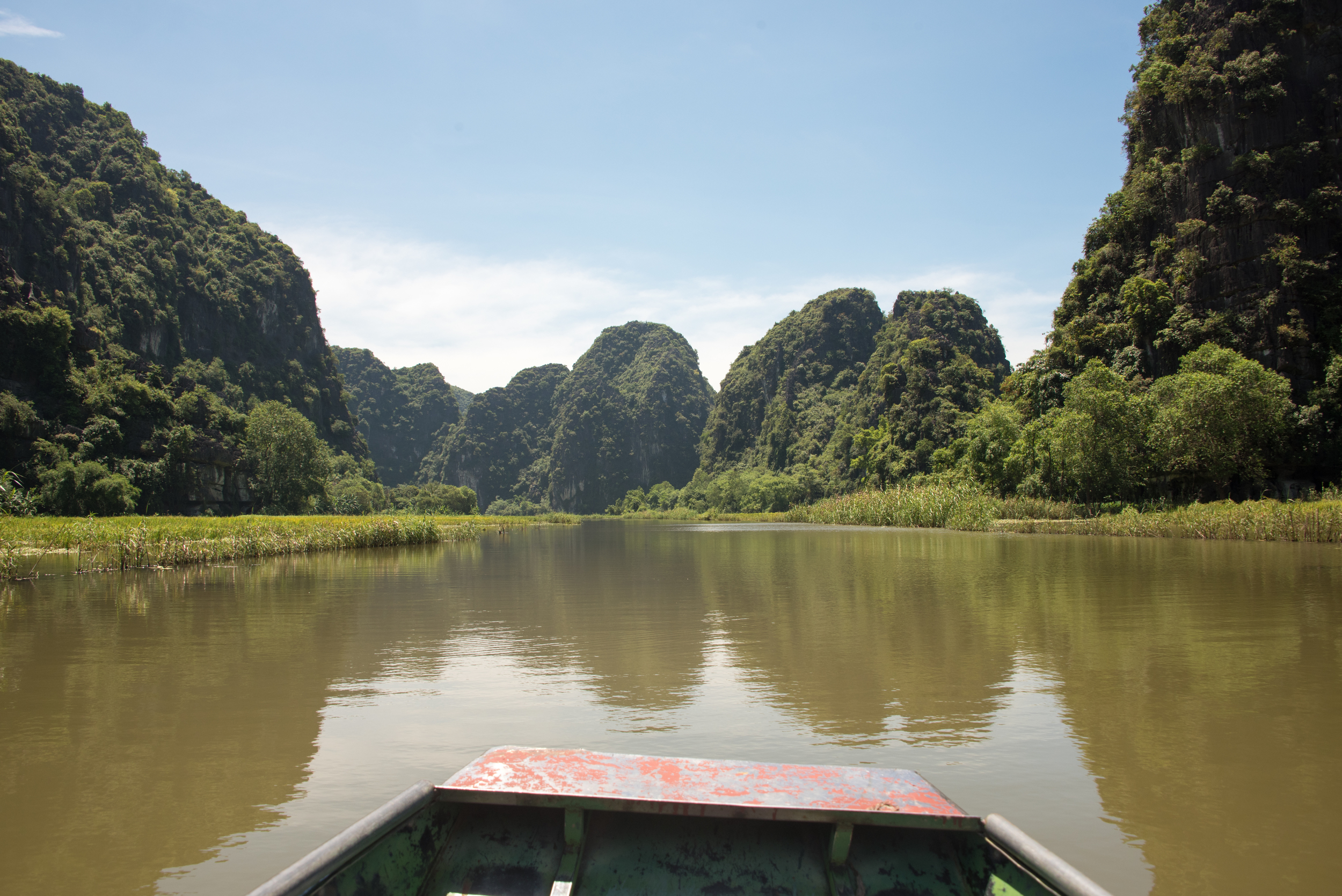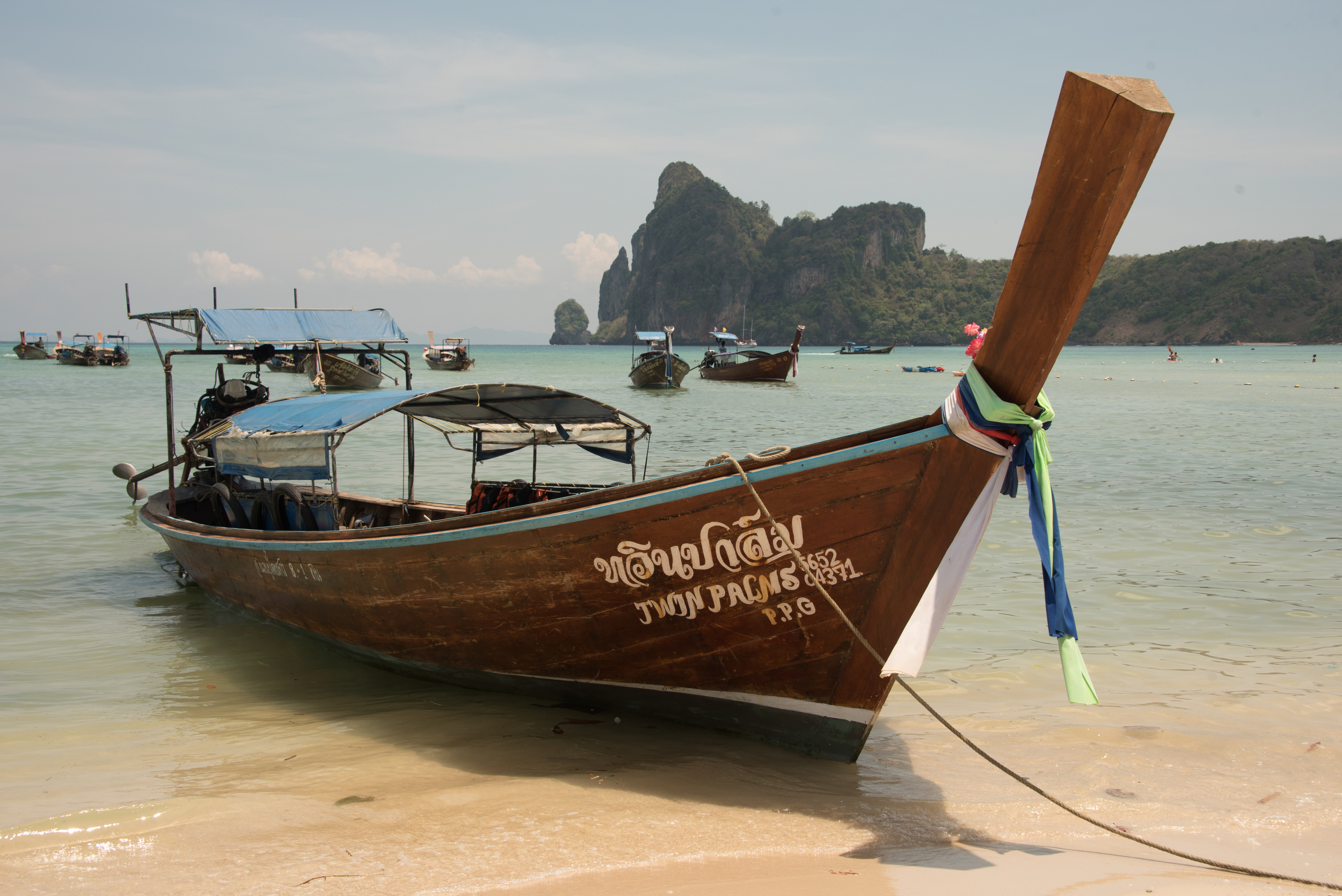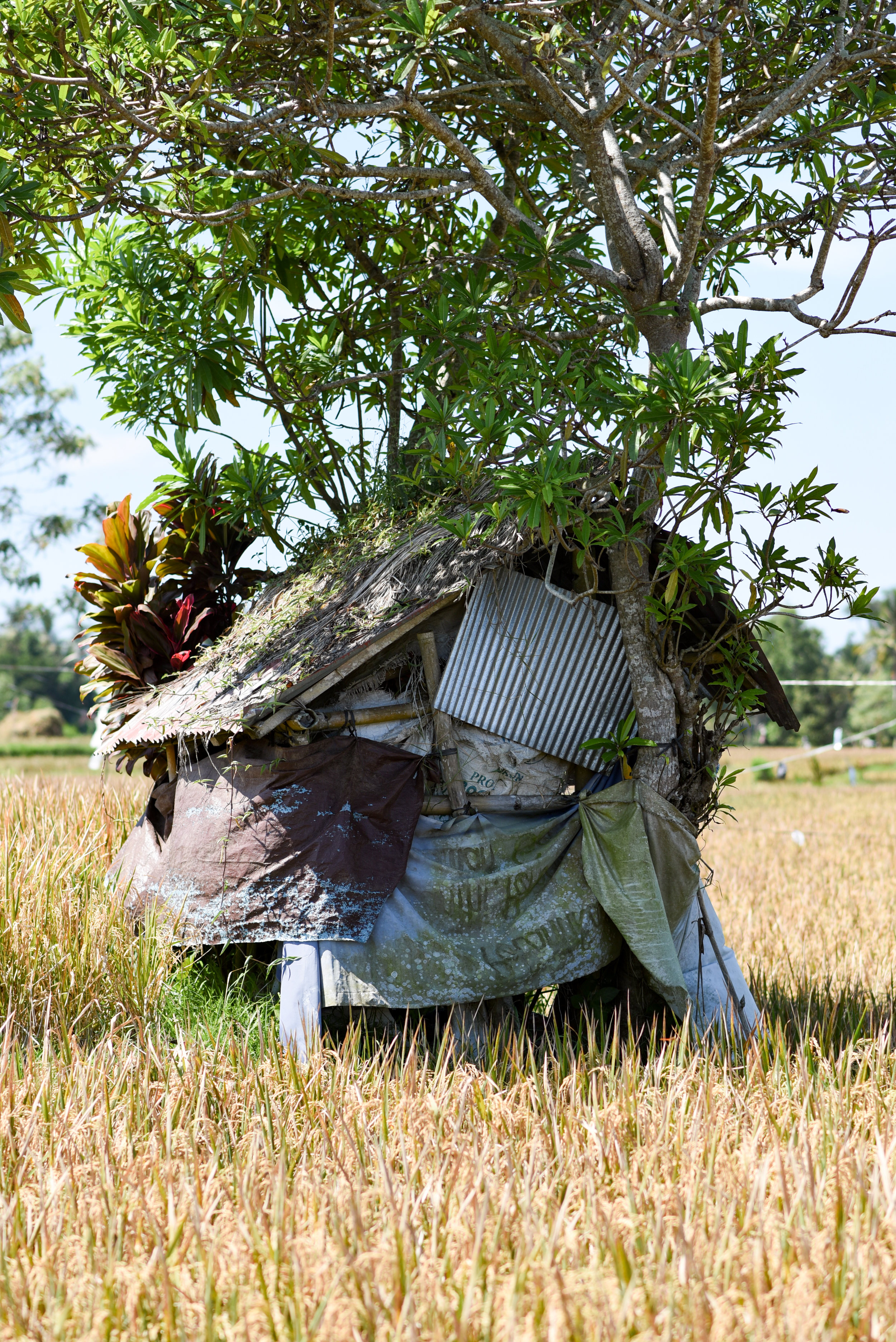For as long as I’ve been alive, the family garage has held at least 3 permanent parking spaces for motorcycles. A former motocross racer, my Dad only just recently sold off his dirt bike, officially hanging up the gloves on a career that ended long ago, yet still lived on through the photos and trophies that continue to hold prominent places next to lawnmowers, deer antlers, and power tools. At one point, our garage held a true moped, a Honda 70, the dirt bike, a Suzuki street bike, and a shiny new Harley Davidson. I haven’t quite pinned down the exact reason behind my disinterest in ever getting into the motorcycle scene. Perhaps I was subliminally discouraged by my Mother, who’d seen one too many scars from road rash and removed spleens, or maybe I’d somehow grown up too risk-averse to hop on 2 wheels of death. Whatever the reason, I never had the slightest interest in racing or even riding.
So, as I climbed aboard my brand new 110cc Honda-something, purchased from a fellow backpacker on the streets of Ho Chi Minh City, Vietnam, having never really learned how to ride anything more than an automatic scooter, I had a little moment with myself wondering what the hell I was doing. While those feelings remained throughout many portions of the 5-day ride from Ho Chi Minh to Hoi An, the cause of such feelings changed drastically. It didn’t take very long to get the hang of the clutch and switching gears (though I did stall plenty of times), however, the chaos unfolding before us was something I could never have imagined preparing for.
The sheer amount of motorbikes and vehicles on the roads is one thing, but the fact that they all travel in literally every direction from any given point on the road is an entirely different beast. The far right “lane” is generally reserved for motorbikes, regardless of which direction they’re travelling. A lane barely big enough for a smart car, though, doesn’t quite do the job of containing rows 5 or 6 deep of honking, swerving, above capacity bikes. Stop signs are non-existent, and Yield apparently doesn’t translate in Vietnamese, as any sort of t-intersection will involve at least one motorbike barreling into traffic without even so much as a glance into the lane they’re crossing into. Large buses, semi-trucks, and passenger cars pass each other at will, with zero regard for what traffic is coming the other way on the two-lane road. Size trumps all, and I’m fairly certain any of the multitude of trucks that nearly ran us over would have continued on their way after turning us into banana pancakes.
Rush hour traffic an hour or two outside of Ho Chi Minh felt like I was at the starting line of a marathon, if that marathon was run on two death wheels, pros were intermixed with walkers, and there was another race running exactly perpendicular at the same time. Oh, and the race path was filled with quicksand, sinkholes, and thick exhaust fumes. I’m still not sure how I survived that without either killing myself or someone else. The 3-hour ride turned into 6, and as daylight quickly began to burn off, a new concern arose. I failed to mention that the bikes purchased weren’t exactly fresh off the shelf. Rebuilt who knows how many times, the mish-mash of parts may not have exactly been street legal. My headlight did not work, which began to pose a problem as darkness fell. One functioning headlight and 2 functioning headlamps made for a nerve wracking 2 hours to our first destination, as night buses began their routine of passing anything and everything in sight, regardless of what stood in front of them. My little light didn’t stand a chance. While I admit this was not the smartest thing I’ve ever done, we were basically in the middle of mostly nowhere once darkness fell, so getting to our destination was probably the safest thing to do. Probably.
Mui Ne is a little beach town that served as a perfect respite for the night and next morning, relaxing by the pool and attempting to process what we’d just survived. After a couple oil changes, we were off the next afternoon to Dalat, a mountain town known for its great scenery, French influence, and cooler temperatures. I somehow regressed with my skills on the second day, as the gravel, potholes, sand, and crazy drivers got the best of me a couple times, causing me to drop the bike. Thankfully, there were no real injuries to myself or the bike, just a wounded ego. Road work is interesting around these parts, as there never seems to be anyone directing traffic, you’re basically forced to find your own way through the maze of gravel, potholes, and barriers. Find my way I did, just barely, much to the delight of my much more experienced travel mate, without whom I doubt I would have made it out alive.
We rested an extra day in the refreshing mountain air of Dalat, taking advantage of the delicious home-cooked meals at our hostel/homestay, exploring quite possibly the coolest bar I’ve ever been in, equipped with a network of caves for exploring, and doing a little canyonning down the river, as if we hadn’t had enough adventure already. From Dalat, it was a 6 hour ride to Buon Ma Thuot, a small city in the Central Highlands of Vietnam, known for its coffee production. After leaving Dalat, sightings of westerners were few and far between, as cities and beaches gave way to villages and rolling hills, filled with crops and jungles.
The feeling of being stared at can have different effects on people. There are stares of wonder, aggression, disdain, amusement, excitement, curiosity, and confusion. We experienced the gamut of reactions as we passed through the highlands. For every 5 people waving or saying hello, there’d be one flipping us off, or yelling in our faces as they passed by. For every few people willing to help point us in the right direction or give us advice, there’d be a gas station attendant charging you after filling up someone else’s tank, or speed demons purposely grazing ever so close to your bikes on the side of the road to give you a little scare. It was all slightly unnerving, yet enjoyable at the same time. One conversation I had with a young child at a very nice coffee resort/restaurant sums up the experience quite well. It went a little something like this:
“Whi’e”
“What?”
“Whi’e”
“White?”
“Yes”
“I’m white, yes I am”
“How are you?”
“I’m good, and you?”
“What’s your name?”
“Andy, what’s your name?”
“Where you from?”
“California”
“F$%& You!”
“No, no, don’t say that. It’s bad”
“F@#$ You!”
Alright then. Off she went, peeking at me behind pillars and parents. Oh Vietnam.
At one village, we stopped for some drinks and some stale peanuts at a roadside hammock stand. Slowly but surely, neighbors came outside to say hi and practice their English a bit. It was the exact experience I’d imagined beginning the journey, no swearing involved this time.
The scenery itself was stunning. The roads got progressively better for the most part, making the curving mountain terrain a joy to ride, soaking in the panoramas and the crisp air. We passed by weddings and funerals, roadside fires and rice field floods, scorching heat and monsoon rain, all on bikes that took more than a little tender loving care to get started, but somehow brought us safely into Hoi An, some 700 miles later.
A trip I won’t soon forget, a trial by fire of sorts for my first true motorcycle experience.
Hey Dad, you up for a road trip?

























































































































